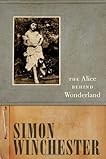Spinning by Tillie Walden
My rating: 4 of 5 stars
“Every rink smells the same.
They look the same, too.”
Tillie Walden begins her graphic memoir with her first visit to an ice rink in some time. Just before she steps on the ice, the narrative jumps back eight years, to an early morning in New Jersey. Walden relates the story of her life as a competitive figure and synchronized skater through her family’s move from New Jersey to Texas, through her transition from public to private school, and through her experiences of friendship, bullying, and first love. As she grows into herself, she eventually quits competitive skating after 12 years.
The artwork is lovely, but the narrative suffers from a lack of focus. The dominant mood is a sort of diffuse sense of disappointment. After the move to Texas in the summer after fifth grade, skating “felt dull and exhausting.” She continues skating until the summer before senior year of high school, though, unable to explain it even to herself. Walden has her first relationship with another girl – after having known since she was five that she was gay – and eventually comes out to her friends and family. She experiences sexual harassment and the ensuing self-doubt that will feel horribly familiar to many readers. Yet, no matter what happens, it all feels muted: the highs aren’t very high, and the lows aren’t very low. Despite literally showing her life on the page, it feels distant. It is all beautiful and cold, sitting a little too perfectly in that ice rink.
View all my reviews
Source: Checked out from my public library
Challenges: Read Harder 2020 (#4: A Graphic Memoir); Reading Women 2020 (#23: An LGBTQ+ Author)









